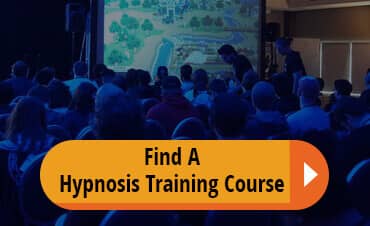
When you, as the hypnotist, are focused on the hypnotic experience – rather than your own hypnotic operation – you begin to map out the hypnotic subject’s mind and how they like to think.
You discover how the hypnotic subject makes sense of the world and how they interpret your instructions.
Here’s an example: Have you ever noticed that there are two camps when it comes to what instructions to you give to a new hypnotic subject?
In the one camp (usually the classical hypnotist) the subject is told to “clear your mind and make it as blank as possible.”
The suggestions are then given and they impact directly on the unconscious mind without mediation.
This works – it’s been proven by countless successful hypnotic trances.
But sometimes the client cannot blank their mind out, or they ignore that part of the instruction and try to help matters along.
So they become a poor hypnotic subject.
The hypnotist could blame them for “resisting” – or blame himself for not being “powerful” or “flexible” enough…
In the other camp sit those that tell the client to attend the suggestions fully.
To arrest all of their attention on the suggestions given and to really think about what they mean.
These are typically indirect hypnotists – “Ericksonians” being the most famous amongst these.
Again, these are very successful inductions.
So which camp is right?
How can you tell someone to blank their mind – in order to create the basic conditions for a hypnotic trance to develop – and then give them a completely opposite set of instructions (i.e. attend fully to these suggestions, really think about them)? There seems to be a irresolvable conflict.
But that’s just on the surface of things.
Lets have a look at what they are both doing in terms of the hypnotic subjects experience.
With the “blank mind” instructions, you are fixating peoples attention (on the process of keeping the mind blank – it takes a lot of work!) and bypassing the critical factor.
If you have no conscious mediation, there can be no critical thinking blocking the suggestions.
Blanking the mind also has the effect of altering your state by understimulating the mind.
The mind needs a certain level of stimulation to maintain ordinary consciousness.
That’s why a sensory deprivation device like a floatation tank can induce a trance.
Of course if they start thinking too much, then they are restimulating the mind – which maintains the equilibrium necessary for ordinary consciousness.
That’s when the critical factor (which like most cognitive processes is state dependant) starts interfering with the suggestions.
 Now lets look at what happens with the “put all your attention on these suggestions” instructions.
Now lets look at what happens with the “put all your attention on these suggestions” instructions.
First of all, you are still fixating attention. You are also limiting the stimulus that enters the mind.
Remember that the instructions are to pay exclusive attention to the suggestions.
That leaves no room for analysis, extraneous thoughts, distractions etc.
This is backed up in the manner in which the suggestions are delivered (more on this later.) In essence, whilst the instruction may sound very different to the first one, it has the same net effect in people’s experience – provided that they follow the instructions fully!
For the sake of completeness, I should also mention that there is another approach to inducing hypnosis based on overstimulating the mind – with the same effects on ordinary consciousness as understimulation.
“There are no two people alike…No two people who understand the same sentence the same way…So in dealing with people try not to fit them to your concept of what they should be.” – Milton H. Erickson, MD
This is the domain of confusion and overload inductions.
I will not look at these further here as they are a special case and would only confuse present matters! By the way, I want to point out that I also believe that the “Hypnotic Operator” focus is a valuable perspective at certain stages.
For example when you learn hypnosis at whatever hypnosis training or hypnosis school you go to, the hypnotic operator focus allows you to get to grips with the skill set – a very important stage in your journey to mastery!
So one of the key skills to mastering hypnosis will be to know when to switch focus to a more useful mode of thinking! Notice now how switching from “Hypnotic Operator” focus to “Hypnotic Experience” focus has given us some great insights.
So far we have looked at how to set the right conditions in the hypnotic subject’s mind in order to allow a hypnotic trance to develop.
You won’t know which way the hypnotic subject will jump until you actually give them the instructions and see what happens! This is the first stage of training a hypnotic subject.
You have laid the foundations – it is possible for a hypnotic trance to occur.
Soon it will be time to build the hypnosis house.







![[ADVANCED GUIDE] How To Master Hypnotic Regression Therapy - Part I: Essential Principles To Profoundly Transform Your Subject’s Emotional Trauma [ADVANCED GUIDE] How To Master Hypnotic Regression Therapy - Part I: Essential Principles To Profoundly Transform Your Subject’s Emotional Trauma](https://hypnosistrainingacademy.com/wp-content/uploads/2016/09/hypnotic-regression-therapy-essential-principles.jpg)



![Yogic Breathing For Hypnosis: 3 Easy Techniques To Ground & Relax Your Clients Before Inducing A Hypnotic Trance [Includes Infographic] Yogic Breathing For Hypnosis: 3 Easy Techniques To Ground & Relax Your Clients Before Inducing A Hypnotic Trance [Includes Infographic]](https://hypnosistrainingacademy.com/wp-content/uploads/2019/05/yogic-breathing-for-hypnosis.jpg)

